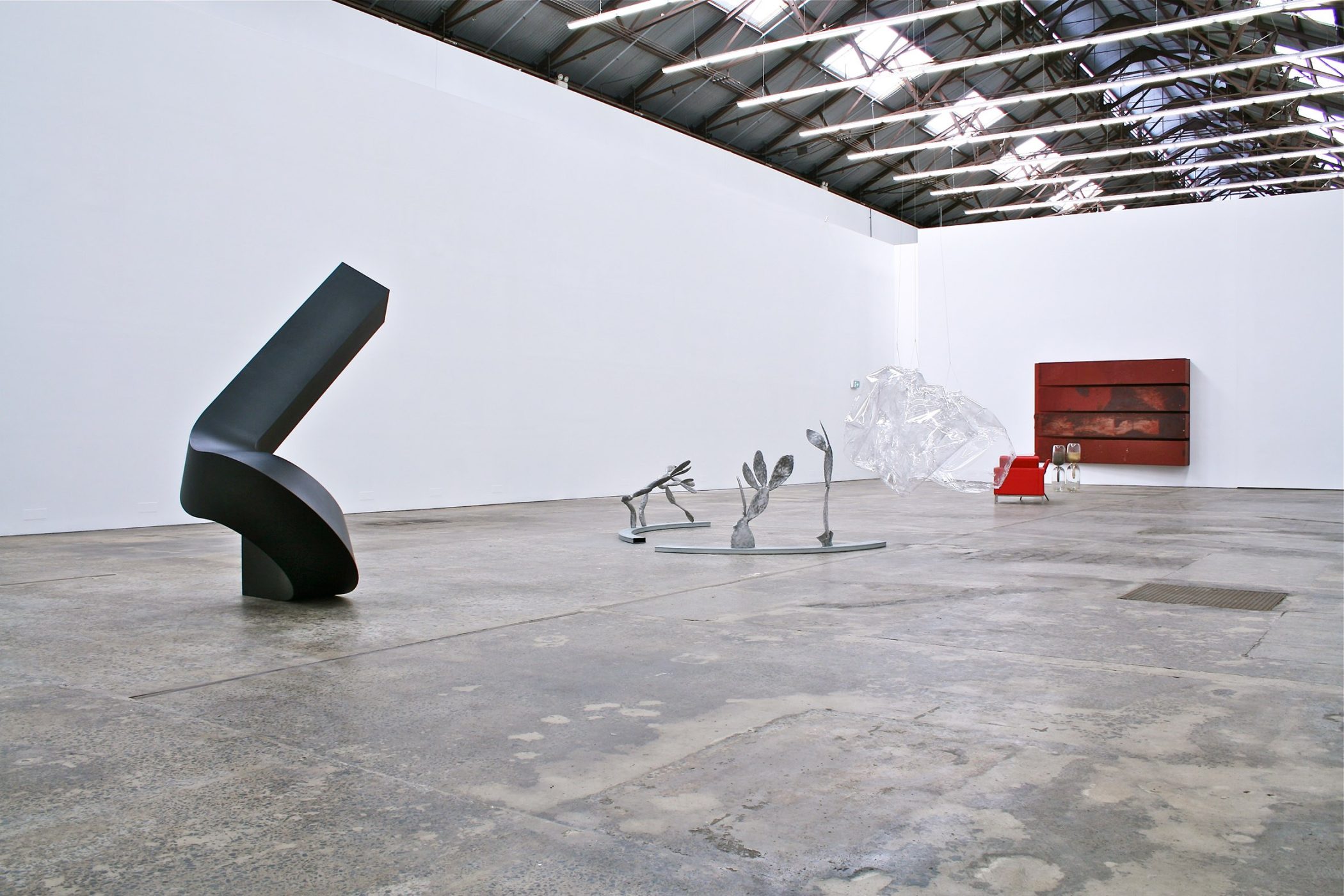Benjamin Armstrong, Stephen Bram, Janet Burchill & Jennifer McCamley, Angela de la Cruz, Mikala Dwyer, Clement Meadmore, Mike Parr
In abstraction, the body
28th April – 16th June 2012
Anna Schwartz Gallery Carriageworks
In abstraction, the body: a rationale, a feeling
In abstraction, the body composes a line of generative dialogue between the works of seven artists, each of whose complex, interdisciplinary practice in some way grapples with modernism’s altering of representation, and its radical dissolutions, disavowals, re-evaluations and transformations of the body. an important context for the inclusion of these particular works, isolated from the wider conceptual programs pursued by the artists is a contemporary humanist foundation in which “art organises both experience and the world”.
In abstraction, the body emerges from my reading of and response to the paintings of Francis Bacon and Barnett Newman. Specifically, Francis Bacon’s assertion that he saw his work as a “tightrope walk between figurative painting and abstraction” has guided my own understanding of modernism’s radical transformations of the body, and feeling for the dynamic spatial emergence of the figurative body from abstraction, or the immersion or absorption of the body in abstraction.
It was Newman’s painting that opened my eyes as an art student to the metaphysical and spiritual dimensions of abstract pictorial space; of the capacity of abstract space to activate and alter the existing conditions of the imagination and the viewing body. Newman’s desire that his painting give a viewer, somehow, a “feeling of his own totality, of his own separateness, of his own individuality” underpins yet simultaneously moderates the subjectivity I have brought to composing this dialogic line.
I envisaged a ‘tightrope’ running the length of the gallery, this line interacting vitally with the architecture, and particularly with the archaeology of the floor and the visual residues of its industrial past. Five sculptural works, all generally scaled to the human body — but that infer and allude to the body in non-didactic ways are situated between Stephen Bram’s 2007 painting Untitled (two point perspective) and Mike Parr’s The AtomicArm(1995). While Bram’s and Parr’s works operate as powerful visual and spatial anchors of the tightrope, they are not end points in the conventional manner objects define architectural parameters. rather, both offer an abstract space of perspectival vanishing points that open space beyond their two- dimensional (Bram) and three-dimensional (Parr) planes, into which the viewing body and psyche can potentially be absorbed.
This tightrope has two itineraries – forward and backward – and this establishes the dynamic relation between works: from Bram to Meadmore to Burchill/McCamley to Dwyer to de la Cruz to Armstrong
to Parr and back again, there is a demand on viewers to make certain conceptual leaps between forms
and their content, and those leaps can play on the idea that this tightrope articulates tensions between the geometric and the informal; between inorganic and organic; projection and recession; poise and imbalance; resolution and imperfection; dissolution and reconstitution; physical and material limits / intellectual and emotional limitlessness – all conditions of the body and of abstraction.
In abstraction, the body proposes a line of dynamic dialogue. There is a play between forms as they emerge from resolute abstraction to intersect with nature, the modelling of nothingness, to the fragile, erotic body: its appearance and eventual disappearance.
Jason Smith, 2012
Images

In abstraction, the body, 2012
installation view, Anna Schwartz Gallery, Carriageworks
Curated by Jason Smith
